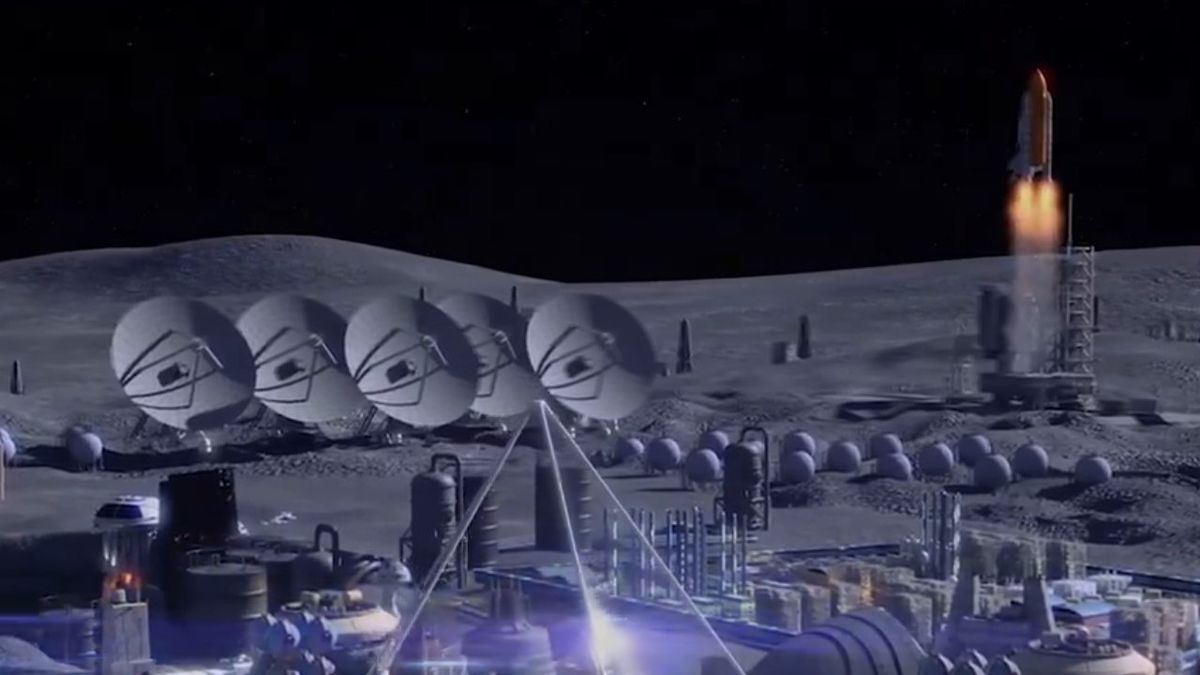NASA postpones the Artemis 2 moon mission to 2026 and pushes the astronaut landing for Artemis 3 to mid-2027.

NASA delays Artemis 2 moon mission to 2026, Artemis 3 astronaut landing to mid-2027 (Image Credit: Space.com)
We’ll have to wait a bit longer to see the first crewed moon mission since the Apollo era lift off.
NASA announced today (Dec. 5) that it’s delaying the planned launch of Artemis 2, a flight that will send four people around the moon and back, from September 2025 to April 2026. And Artemis 3, a crewed moon landing that had been targeted for late 2026, is now scheduled for mid-2027. The extra time is needed primarily to finish prepping the Orion capsule for its first-ever crewed flights, according to NASA officials.
“Space is demanding,” NASA Administrator Bill Nelson said during a press conference today. “And we, and our industry and international partners, need this time to make sure that the Orion capsule is ready to safely deliver our astronauts to deep space and back to Earth.”
Orion has one flight under its belt to date — the 25-day-long Artemis 1, an uncrewed test mission that sent the capsule to lunar orbit and back to Earth.
Related: Artemis 1: 10 wild facts about the NASA moon mission
Everything appeared to go well on Artemis 1. However, postflight analyses revealed that Orion’s heat shield wore away more unevenly during its reentry to Earth’s atmosphere than engineers had predicted. Temperatures inside Orion remained near room temperature, meaning that astronauts would have remained safe, had any been aboard. But engineers needed to figure out what happened — and they’ve now come to some conclusions, NASA officials announced in today’s press conference.
The uneven ablation was a consequence of Orion’s “skip” reentry trajectory, in which the capsule bounced off the atmosphere and then came back in again multiple times. This strategy is required to dissipate the tremendous energy associated with high-speed returns from the moon, NASA officials said, but it had an unexpected downside on Artemis 1.
“While the capsule was dipping in and out of the atmosphere as part of that planned skip entry, heat accumulated inside the heat shield outer layer, leading to gases forming and becoming trapped inside the heat shield,” NASA Deputy Administrator Pam Melroy said today. “This caused internal pressure to build up and led to cracking and uneven shedding of that outer layer.”
Further study has shown that Orion’s heat shield will be able to protect astronauts on the 10-day-long Artemis 2, she and others announced during the press conference; a new version doesn’t need to be developed for the coming crewed mission. But planners will alter the reentry trajectory to minimize the issues experienced during Artemis 1.
“For Artemis 2, engineers will limit how long Orion spends in the temperature range in which the Artemis 1 heat shield phenomenon occurred by modifying how far Orion can fly between when it enters Earth atmosphere and lands,” NASA officials wrote in an Artemis FAQ that was published today.
That revised trajectory will also bring the Artemis 2 Orion down in the Pacific Ocean closer to San Diego than previously planned, meaning it will be easier to get help to the mission’s four astronauts if anything goes wrong during reentry.

Artemis 2 likely would’ve been delayed by a year or so, to late 2026, had a heat-shield replacement been required, NASA officials said today. But the mission team still needs more time than originally envisioned to get Orion up to crew-carrying speed, explaining the roughly six-month push.
“The updated timeline for the Artemis 2 flight is informed by technical issues engineers are troubleshooting, including with an Orion battery issue and its environmental control [life-support] system,” NASA officials wrote in the Artemis FAQ. “The heat shield was installed in June 2023, and the root cause investigation took place in parallel to other assembly and testing activities to preserve as much schedule as possible.”
Related: NASA’s Artemis program: Everything you need to know
Artemis 3’s timeline is likewise informed by numerous factors — perhaps even more of them, given the increased complexity of the mission.
For example, the current plan calls for the involvement of SpaceX’s Starship megarocket, whose upper-stage spacecraft will serve as the Artemis 3 lunar lander. Starship is still in development, with just six test flights under its belt, though the last few of these missions have gone very well.
The newly revised Artemis 3 timeline still keeps the United States ahead of China, which has said it plans to land astronauts on the moon by 2030. Both nations are targeting the lunar south pole, which is thought to be rich in water ice, a crucial resource for a settlement or research outpost.
Nelson has said repeatedly that the U.S. needs to establish its lunar toehold first, so China cannot establish norms and practices on the moon — which could include barring other nations from certain areas. And the NASA chief said today that he thinks the U.S. is in good shape to be the lunar leader.
“I think we are handing to the new administration a safe and reliable way forward for us, which is to go back to the moon, get there before China, to have a presence in cislunar [Earth-moon space] — which is important to our country, other than NASA — and to be on the way of ‘moon to Mars,’” Nelson said. “And I think we’ve got that wrapped up with a bow, and I think it’s on its way.”







